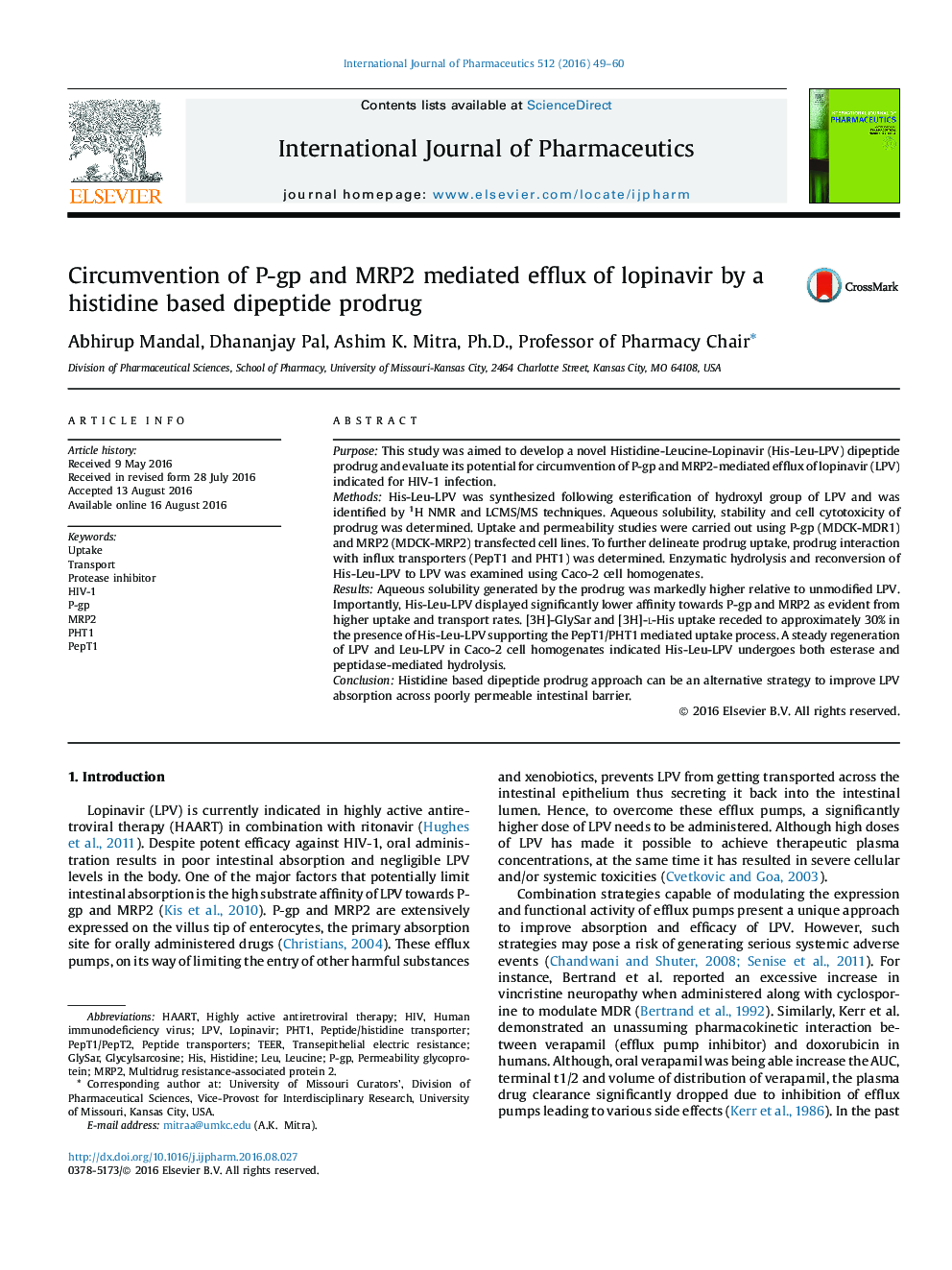| Article ID | Journal | Published Year | Pages | File Type |
|---|---|---|---|---|
| 2500768 | International Journal of Pharmaceutics | 2016 | 12 Pages |
PurposeThis study was aimed to develop a novel Histidine-Leucine-Lopinavir (His-Leu-LPV) dipeptide prodrug and evaluate its potential for circumvention of P-gp and MRP2-mediated efflux of lopinavir (LPV) indicated for HIV-1 infection.MethodsHis-Leu-LPV was synthesized following esterification of hydroxyl group of LPV and was identified by 1H NMR and LCMS/MS techniques. Aqueous solubility, stability and cell cytotoxicity of prodrug was determined. Uptake and permeability studies were carried out using P-gp (MDCK-MDR1) and MRP2 (MDCK-MRP2) transfected cell lines. To further delineate prodrug uptake, prodrug interaction with influx transporters (PepT1 and PHT1) was determined. Enzymatic hydrolysis and reconversion of His-Leu-LPV to LPV was examined using Caco-2 cell homogenates.ResultsAqueous solubility generated by the prodrug was markedly higher relative to unmodified LPV. Importantly, His-Leu-LPV displayed significantly lower affinity towards P-gp and MRP2 as evident from higher uptake and transport rates. [3H]-GlySar and [3H]-l-His uptake receded to approximately 30% in the presence of His-Leu-LPV supporting the PepT1/PHT1 mediated uptake process. A steady regeneration of LPV and Leu-LPV in Caco-2 cell homogenates indicated His-Leu-LPV undergoes both esterase and peptidase-mediated hydrolysis.ConclusionHistidine based dipeptide prodrug approach can be an alternative strategy to improve LPV absorption across poorly permeable intestinal barrier.
Graphical abstractFigure optionsDownload full-size imageDownload high-quality image (228 K)Download as PowerPoint slide
